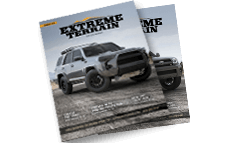Navigating Toyota 4Runner's 2023 Accessories and Parts Navigating 2023 Toyota 4Runner accessories and parts (including aftermarket) can be daunting. Such parts and mods range from body parts, to engine components, suspension systems, electrical systems, braking systems, exhaust systems, and interior accessories. When looking for quality standards, materials, performance characteristics, and manufacturing processes, one must be aware of the vehicle’s mileage, operating conditions, and detailed maintenance history to ensure the optimal lifespan and functionality of these components.
Engine Components
Parts like air filters, spark plugs, and timing belts—which can be fabricated from numerous materials including various types of metals, composites, and polymers—are essential for maintaining engine performance and fuel efficiency. They're often made using detailed injection molding or machining processes, while their performance is gauged with international standards such as ISO 9001 and QS 9000. Crucially, these must be regularly checked and replaced per Toyota's service schedule or if signs of damage or wear become apparent, for instance, decreased engine performance, increased fuel consumption, or even unexpected engine noise.
Braking and Suspension Systems
Braking and suspension system components—like brake pads, rotors, struts, springs, and shocks—are made predominantly from high-strength steel alloys to endure the rigors of momentum changes, but also involve ceramics and composites. Their manufacture could involve casting, boring, or CNC milling and require regular inspection and upkeep for safety and performance purposes. High-quality aftermarket versions of such parts often undergo stringent quality control to ensure consistent performance under diverse operating conditions, and meet or exceed original equipment (OE) standards.
Electrical Systems
When seeking compatibility in electronic systems, match systems such as the ECM or CAN bus of your 2023 Toyota 4Runner with the respective accessory. For instance, aftermarket alarm systems, audio equipment, or GPS units must be compatible with the vehicle's native wiring and coding, ensuring seamless communication with other on-board systems for optimum performance. Integration issues can lead to significant user-experience problems or even electronic malfunctions.
Interior Accessories
Interior accessories—like upholstery, floor mats, and custom gauges—have their functional roles too. While aesthetic appeal is undeniably an aspect, they also translate into the comfort, utility, and safety of occupants—a luxury leather seat is of little value if its mounting mechanism fails in an accident. Hence, rigorous safety standards and compliance with materials fabrication processes are as critical as their look and feel.
Exhaust Systems
Exhaust system components like mufflers and catalytic converters, often composed of high-quality stainless steel, should be made through casting or welding to offer noticeable performance boosts and to tolerate extreme temperatures under the vehicle. Performance degradation or damage can lead to power loss, increased emissions, or an excessively loud exhaust note. Selecting the right part or accessory requires a thorough understanding of granular information such as part specs, specific materials used, and the manufacturing process implemented. Taking into account a part's track record for durability and performance can be immensely helpful in making wise purchase decisions. Keep in mind that while aftermarket components may have superior features, they must be cross-checked for compatibility with your specific vehicle model. Compatibility extends well beyond the physical fit—interface with electronic systems, stress or load factors relative to other components, and the overall impact on vehicle dynamics are all essential considerations to ensure vehicle performance, efficiency, and safety.
















